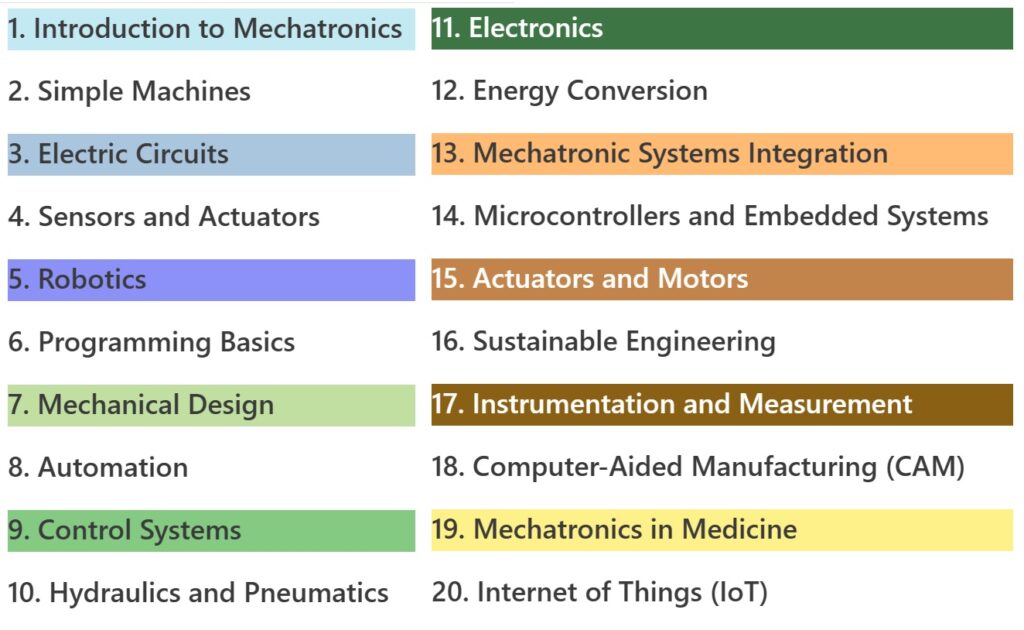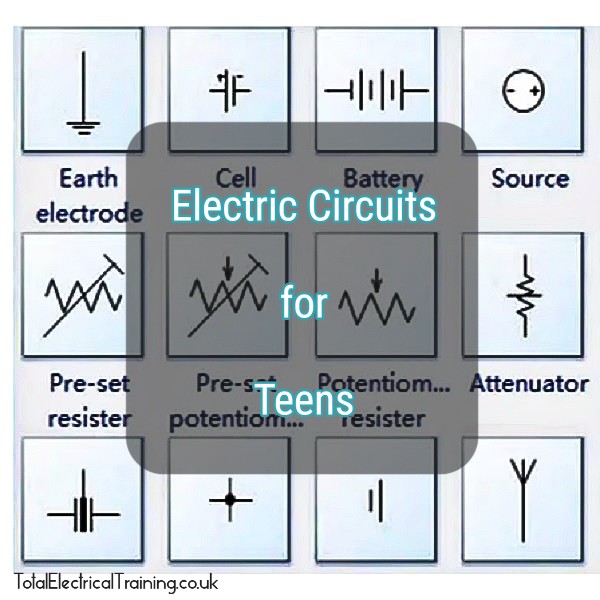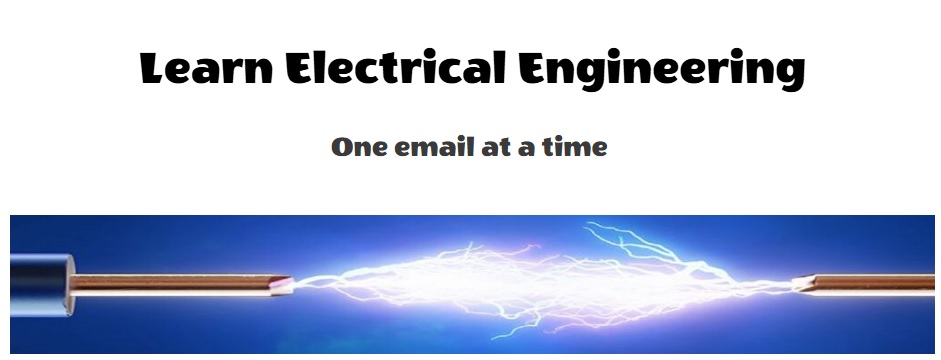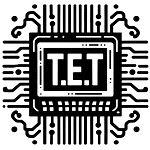Click the simple table below to view the FREE Mechatronics Course for Teens OVERVIEW

To complete this lesson you have READING, VIDEO, QUESTIONS, and A HANDS ON PROJECT
Electric Circuits and How They Work
Understanding Electric Circuits: A Beginner’s Guide
Electricity is a fundamental force of nature that powers much of the technology we use every day, from lights and appliances to computers and smartphones. At the heart of many electrical devices lies the electric circuit, a pathway through which electricity flows. Let’s delve into the basics of electric circuits and explore some common components you’ll encounter.
What is an Electric Circuit?
An electric circuit is a closed loop or pathway through which electric current flows. It consists of three essential components:
- Power Source: This provides the energy needed to drive the flow of electric charge. Common power sources include batteries and electrical outlets.
- Conductors: These are materials through which electric current can easily flow. Metals like copper and aluminum are commonly used as conductors due to their high conductivity.
- Load: The load in a circuit is the device or component that consumes electrical energy to perform a specific function, such as a light bulb or a motor.
Electricity flows from the power source, through the conductors, into the load, and back to the power source, completing the circuit.

How Does a Switch Control a Circuit?
A switch is a simple yet crucial component in an electric circuit. It controls the flow of electricity by opening or closing the circuit. When the switch is in the “on” position, it creates a continuous pathway for electricity to flow, allowing the circuit to be energized and the load to operate. Conversely, when the switch is in the “off” position, it breaks the circuit, interrupting the flow of electricity and preventing the load from receiving power.
What is the Function of a Resistor in a Circuit?
A resistor is a passive electronic component that resists the flow of electric current. It is used in circuits to control the amount of current and voltage flowing to other components, such as LEDs or integrated circuits. Resistors are crucial for regulating the flow of electricity and protecting sensitive components from damage due to excessive current. They come in various values, which determine their resistance to the flow of electricity.
Why Do We Use LEDs in Circuits?
Light-emitting diodes (LEDs) are semiconductor devices that emit light when an electric current passes through them. They are commonly used in circuits for various reasons:
- Energy Efficiency: LEDs are highly efficient at converting electrical energy into light, making them an ideal choice for applications where energy conservation is important.
- Longevity: LEDs have a significantly longer lifespan compared to traditional incandescent bulbs, making them more durable and cost-effective in the long run.
- Size and Versatility: LEDs come in various shapes, sizes, and colors, making them versatile for different applications, from indicator lights to full-scale lighting fixtures.
In summary, electric circuits form the backbone of modern technology, allowing us to harness the power of electricity to power our devices and perform countless tasks. Understanding the basics of circuits and their components is essential for anyone interested in delving deeper into the world of electronics.
Hands on Project for this Lesson
Assemble a circuit with a battery, switch, and LED (you’ll need, wires or conductive material, a paperclip for a switch or cut piece of wire and an LED) Here is a simple video to help you.
Questions
- What is an electric circuit?
- How does a switch control a circuit?
- What is the function of a resistor in a circuit?
- Why do we use LEDs in circuits?
- Research Question: Explore the differences between series and parallel circuits.
Buy me a Coffee
I would be honoured if you’d buy me a digital coffee to express your thanks for this Mechatronics Course I’ve put together to help eager minds excel in their knowledge, learning and success.
Your kind donation makes it possible for me to continue creating amazing content and fulfil my dream of keeping the majority of what I make FREE and Ad FREE!!!
Thank you from the bottom of my heart, and abundant blessings to you!

Join students and professionals
from across the world increasing their knowledge of Electrical Engineering.
One email at a time
We never send spam or give your information to anyone, Privacy Policy here.



